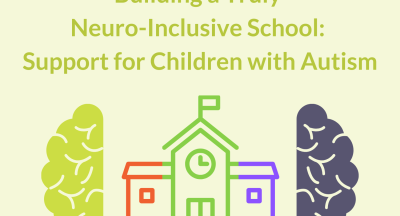
21/11/2020
by Dr Judy Eaton
Blog, Attachment disorder, Autism, Clinician related, Missed or Misdiagnosed, PDA
0 comments
Last updated: 9th February 2023
As many people who have attended the various PDA conferences over the last couple of years may know, we as a team, decided back in 2016 to collate all of the information we collect as part of our assessment process, and analyse what we found. We realised we were in a very fortunate position; we were seeing a large number of children and young people who fitted the PDA profile, and this seemed like an ideal opportunity to have a look and see if any patterns emerged. All of the children we saw were assessed by the same team, in the same location, using the same assessment tools.
…there is still a huge lack of understanding about the PDA profile …
In the years that have passed, the debate about what the PDA profile may or may not be has continued to rumble on. It still does not appear in the diagnostic manuals, and there is still a huge lack of understanding about the PDA profile and ‘complex presentations’ amongst CAMHS teams around the globe. We frequently, and sadly, continue to hear stories of parents who have been accused of fabricating or exaggerating their child’s difficulties, even to the point where the children have been removed from their care. In addition, attributing all challenges that children experience to ‘attachment difficulties’, or poor parenting, continues to be unhelpful. In my clinical role I have worked with a number of young people, usually in their teens or early twenties, who have spent their whole life struggling. The most common phrase they use to describe how they feel is ‘angry, and misunderstood’.
Analysing and writing up our findings in way that would be meaningful to an academic and clinical audience has been a challenge. We are a group of clinicians, not research specialists, and we have, despite many hours of work, only managed to analyse a small part of our data. We have, however, received excellent help and support from a number of well-known researchers.
The result of all this work is that we are proud to announce that we have had two papers published this month. The references for which are given at the end of this blog article. Unfortunately, neither are open access (i.e. free) and, because they are academic papers, they are rather wordy and full of statistical charts. We will be in a position to put both on our website after six months, for all to read.
I thought it might be helpful though to briefly summarise our findings. One paper is in Good Autism Practice, which is a journal accessed mainly by professionals working with autistic individuals, and the other one is in the Journal of Paediatrics and Child Health, which is read mostly by Paediatricians.
Both papers try to capture the ‘essence’ of the PDA profile
Both papers try to capture the ‘essence’ of the PDA profile. We looked first at the way children completed the ADOS. Many of you will have heard of the ADOS but may not be aware of what it actually is. The ADOS-2 (Autism Diagnostic Observation Schedule – version 2) is a play and interaction-based assessment for Autism. It is one of the ‘gold standard’ assessments. However, it should not be used in isolation – it should be part of a multi-disciplinary assessment. The ADOS is scored in a standardised way, and what we found was that there was a significant (as in ‘statistically significant’ – in other words it could not have occurred just by chance) difference in the way in which autistic children with the PDA profile interacted with the examiner, compared to autistic children without the PDA profile. It is important to note that we only reported on those children who met criteria for Autism. We also observed the delightful ways in which many of the children sought to disrupt, avoid or delay completing the ADOS. We really tried to explain this and capture the ‘essence’ of the children we saw.
The second part of our Good Autism Practice paper explored differences in the ‘themes’ that were reported by families when they give us a detailed developmental history, and tell us about their child. We are fortunate that we also see a number of children who have been adopted and have known attachment difficulties and/or have experienced trauma of some kind. Often people ask for these children to be assessed because aspects of their behaviour look very similar to children who have the PDA profile. However, the children in our study were not Autistic.
Once again, we looked at statistically significant differences in the number of times different themes were reported. Some of these supported the literature that already exists, some were new themes. All were reported significantly more times in the children with the PDA profile than the autistic children without PDA. These themes are outlined below:
Existing themes:
- superficial/surface sociability
- obsessively resists/avoids ordinary demands
- blaming other people
- socially shocking or outrageous behaviour
- manipulation (or negotiating excessively)
- communication through dolls/toys
- dominating or bossy towards peers
- strong fascination towards particular people
- rapid inexplicable changes in mood comfortable in role play
New themes:
- elaborate excuses
- sabotaging (things that the child really wanted to do)
- extreme aggression (which seems to result from a loss of control)
- ineffectiveness of traditional reward and consequence-based parenting strategies
Themes where there was no difference between the groups
- early passivity
- language delay
- fantasising
- lying, cheating, stealing
- repetitive questioning
- weak or limp hands
- harassment of others
- difficulties with others
- peer relationships
We have not tried to claim in our papers that this represents proof of PDA being a separate diagnosis or a ‘syndrome’. It obviously does not. What we are hoping though is that it adds to the body of evidence about the PDA profile and stimulates discussion amongst researchers and clinicians.
Traditional parenting techniques do not tend to work with children with PDA
I am sure our papers will be critiqued by people who disagree with the idea of PDA, and there is still a long way to go before there is likely to be general acceptance; but our work is a start. One clear point for us, which is worth emphasising again, is that although there were similarities in some behaviour between the Autism/PDA group, and the group of children with attachment difficulties, there were also some very clear differences. It is important to note that the themes reported above were NOT seen frequently in the children with attachment difficulties. Perhaps most importantly was the message that came across loud and clear to us – traditional parenting techniques do not tend to work with children with PDA. Maybe if just this point was acknowledged, and children were seen as Autistic with a quite distinct profile of strengths and difficulties, there might not be so many young people reporting that they feel ‘misunderstood’ when they are old enough to explain what it felt like for them when they were small.
References
Related Posts
The Digital Playground: A Kind Guide to Online Safety for Your Neurodivergent Teen
05/09/2025
Navigate online safety with your neurodivergent teen. Learn to empower them with...
Autism – The tragedy of the missed and misdiagnosed
24/08/2023
Blog updated 10th April 2024The inspiration for this blog article came from three...
The Problem Isn’t the Pupil, It’s the Scissors: Building a Truly Neuro-Inclusive School
01/07/2025
Discover how shifting our perspective from "fixing the pupil" to changing the...
Back to school for children with PDA … five years on
24/09/2021
Article Updated - September 2022 Since this article was first written in 2017...





